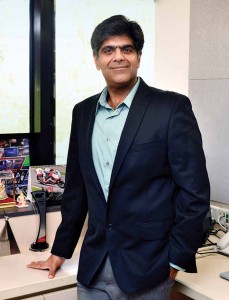Q & A
Veejay Nakra,
Senior Vice President, Sales & Customer Care, Automotive Division, Mahindra & Mahindra
Interview by: Bhargav TS
Q. What is your industry outlook?
A. The sentiments are positive and things are moving in the right direction. We have a full year for the new products that we have launched. The first quarter growth is mainly due to that. The monsoon is looking good, and the sentiments, in the urban as well as rural areas are good. The realisation of this will however start kicking in towards the third quarter. The second half of this year will be stronger therefore. Currently, the M&HCV segments are growing, and we hope the LCV segment will also experience a strong growth. If the infrastructure expands, M&HCV growth will be followed by LCV growth. We will see the benefit of both, infrastructure and a good monsoon. The two will help in reviving the LCV segment in the coming months.
Q. At Mahindra, the emphasis on electric vehicles seems to be growing. What do you hope to achieve?
A. We are looking at making multiple drivetrain fuel options available to customers. It is therefore not just about diesel and petrol. We are looking at CNG fuel for certain products, and at electric vehicles for certain applications. We were the first in India to acquire a company that provides electric (mobility) solutions. We have the e20 and a few other products from this business arm. We are now looking at creating electric solutions in many platforms. The Mahindra Supro is the first product in the commercial vehicle category. We are working on many other existing products and platforms to provide electric solutions.
Q. How hopeful are you of electric or CNG infrastructure to come up sooner than later?
A. The manufacturers as well as SIAM are working on it. They are also talking to the government. There is very good realisation in the country, and the government is actively working towards creating the right environment. And, it is not just about CNG or LPG, but also about electric vehicle technology. Electric vehicle technology will boom with the progress in battery technology that would allow for longer drives and quicker charging. Manufacturers in many countries are working on such technologies. Clean technologies are going to be the future of our industry. Any new policy or framework takes time. The good part is the framework the government has come up with that gives use a road map till 2020. It is a positive sign.
Q. Considering the requirements of CVs, how do you think electric technology can play a role?
A. If you look at the current limitations of technology, it may not be possible. However, the speed at which technology is developing in electric vehicles, we can see it coming in Small Commercial Vehicles (SCV). For it to come in Heavy Commercial Vehicles (HCVs) will take longer. For HCVs, the torque level has to be higher. Also, it would depend on the load HCVs carry and the terrain they travel over.
Q. Apart from an electric version of Supro, which other CVs could we look at in the electric form?
A. We are currently looking at passenger segment. We therefore launched the Supro electric passenger version. Over a period of time we will bring electric versions of other vehicles too. In India, customers usually overload their vehicle. The challenge is not about powering the vehicle for rated load capacity, but about factoring in the amount of overloading, or its nature. That is our main challenge. We will therefore initially think of electric vehicles for carrying people only. Such vehicles are seldom overloaded.
Q. How challenging it is to develop an electric goods carrier?
A. There are a few things that have to be kept in mind. The need for charging stations for example. The owner of a vehicle for captive use knows when and how long the vehicle will be running. He can accordingly charge the vehicle. For market load application, the driver will not know when he will get his trip, or for how long he has to drive. The need for charging stations en-route is therefore essential. Another big challenge is the higher initial costs. The running cost or the operating cost of an electric vehicle is low, but the initial costs are high. Looking at the profile of buyers in the CV segment, it is definitely a challenge about convincing them to buy a product. In fact, the main challenge is to make the proposition viable for a person to buy the product.
Q. What new are you bringing to the market in CVs?
A. We are strong in LCVs where we operate in a niche segment. Our numbers speak, and we are growing much faster than our competitors in the segment are. As far as the bus segment is concerned, it is about cowl-chassis. The bus platform is adapted to the cowl-chassis. Our team is actively working on it.




















